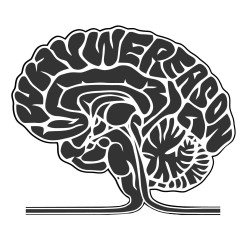Oliver Sacks at the American Museum of Natural History
Last week I had the pleasure of attending a talk by Oliver Sacks at the American Museum of Natural History here in New York City. He spoke about his latest book, The Mind’s Eye, which like his other books, tracks his experiences with patients with neurological disorders. He focused on three of his subjects: Lilian Kallir, a concert pianist who suddenly lost the ability to read music; Patricia, who suffered from aphasia; and Susan who overcame mono vision after 48 years.
Sacks opened his talk, as he did with the The Mind’s Eye, with a letter from Lilian. It reads as follows:
Dear. Dr. Sacks,
My (very unusual) problem, in one sentence, and in non-medical terms, is: I can’t read music, or anything else. In the ophthalmologist’s office, I can read the individual letters on the eye chart down to the last line. But I cannot read words, and music gives me the same problem. I have struggled with this for years, have been to the best doctors, and no one has been able to help. I would be ever so happy and grateful if you could find the time to see me.
Sincerely yours,
Lilian Kallir
Lilian had alexia, which occurs when people lose the ability to read. But what made her unique, as Sacks explained, was that her alexia, “manifested first with musical notation, a musical alexia.” Over the years, it spread such that she had trouble reading words and recognizing pictures as pictures. Obviously, this made life difficult for Lilian. Her handicap affected her everyday from home life to playing the piano. And sadly, her condition worsened over time to the point were she no longer played the piano much. Sacks eventually came to believe that she suffered from posterior cortical atrophy (PCA), which describes people who have “complex visual disturbances – difficulties reading or recognizing faces and objects, occasionally even hallucinations.” Lilian passed away in 2004.
Patricia, as I said, suffered from aphasia, which “means, etymologically, a loss of speech yet it is not speech as such which is lost but language itself – its expression or its comprehension, in whole or in part.” She acquired aphasia tragically. After calling the police, her daughters broke into her house (she had not responded to phone calls in days), and found her lying in bed unconscious. She had been in a coma for twenty hours, which resulted from a large clot of blood in the left half of her brain. Though her chances for survival were bleak, she ended up recovering. She never fully regained her ability to speak, but fortunately, as Sacks explained, “she developed a knack for understanding other people by their gestures and expressions as much as their words. She could indicate her own thoughts and feelings not by speech but eloquent gesture and mime.” By 1996 (five years after her stroke), her “aphasia had lessened; she was able to understand a little speech, though still unable to express herself in speech.” Sacks was happy to report that she continues to remain “active and engaged with the world.”
Finally, there was Susan Barry, or Stereo Sue as Sacks termed her. Sue lacked stereo vision – the ability to see in three dimensions. According to Sacks, her condition is not that uncommon: “Perhaps 5 to 10 percent of the population, for one reason or another, have little or no stereo vision, though they are often not aware of this and may learn it only after careful examination by an ophthalmologist or optometrist.” Sue’s two-dimensional world came from growing up cross-eyed; because her eyes didn’t work together, she had to view the world with one eye at a time. Her disability, however, wasn’t really a disability. She couldn’t perceive depth but she could get a sense of it using other cues. This allowed her to interact with the world – drive a car, go to the mall, or watch a movie – as well as anyone. What was more remarkable was the fact that through extensive therapy she was able to gain stereo vision. In his talk, Sacks described the joyful moment Sue had when she first saw snow fall in 3D. As she explained, “the snow was falling lazily around me in large, wet flakes. I could see the space between each flake, and all the flakes together produced a beautiful three-dimensional dance. In the past, the snow would have appeared to fall in a flat sheet in one plane slightly in front of me…. but now, I felt myself within the snowfall, among the snowflakes.”
Sacks finished his lecture with a few anecdotes from his own struggles with neurological disorders (they are nicely and dramatically explained in a chapter in The Mind’s Eye,which I recommend), including his own inability to see in 3D – although he did say that he once saw flowers in 3D after smoking pot. It was fitting to hear that his next book, due out in the spring, will be about hallucinations. He is getting old – he was at times a bit slow and had trouble reading from his book – but his intellect is still sharp and I enjoyed what he had to say.

